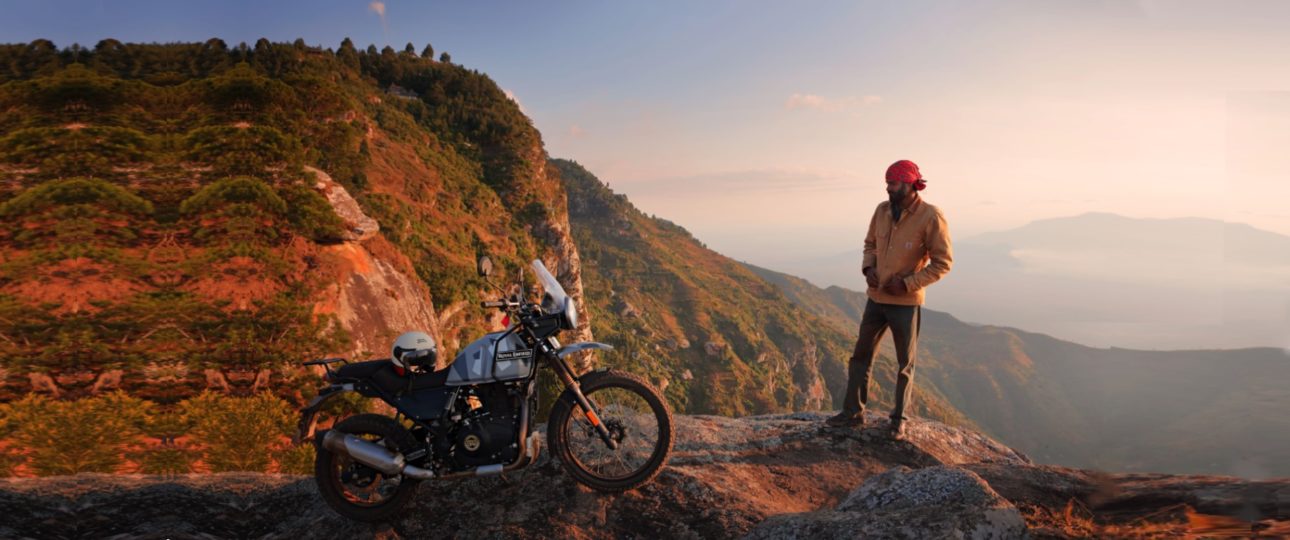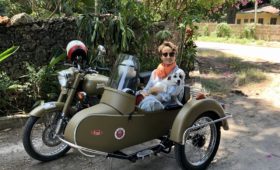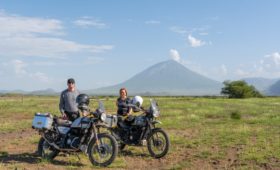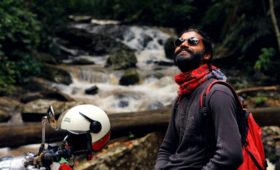Introducing Tanzania East African motorcycling – Welcome to articles on Royal Enfield tours in Mainland Tanzania and in Zanzibar.
So what makes us experts on Africa? Well, we are African born and bred. We are travellers and adventurers. We are fishermen and photographers. We are divers and hikers. We are passionate about our continent and its diversity. Air – Land – Water; we want to share with you what we’ve seen and experienced, for it cannot be described in writing (but we’ll do our best to in this blog!). We have spent our lives fishing, freediving, and sailing it’s oceans, wandering through its deserts, hiking through its forests, and exploring its wide open savannah plains. We are tour operators and we partner up with other like minded operators to offer you the best possible adventures to explore and experience the magical essence that is Africa.
We begin this blog with Tanzania, arguably one of the most exciting and diverse destinations in Africa. Lying a mere 6 degrees below the equator, Tanzania is blessed with a tropical climate and over 1,000km of Indian Ocean coastline dotted with tropical island paradises. Mount Kilimanjaro, the active volcano of Ol Donyo Lengai, Africa’s highest and most iconic peak sits at the heart of the country. There are plenty of wild places in Tanzania ranging from deserts, tropical rain forests, pristine lakes, mountain ranges and cool highlands. These exciting landscapes are also home to some of the top African wildlife areas in the world, and, with over 120 different tribes, plenty of culture and history.
Tanzania hosts some of the best safari destinations on the planet, in fact the word safari (meaning ‘travel’) comes from the Swahili language which is spoken across Tanzania. The annual migration of some 1.5 million or so Wildebeest and Zebra through the Serengeti Plains is one of the world’s largest concentration and migration of large mammals, truly an awesome sight to behold. Lions, elephant, leopard, African buffalo, kudu, eland, gerenuk, giraffe, warthog, chimpanzee and countless other animals make Tanzania world famous for its wildlife. If you want to see the Big 5 in abundance then Tanzania has to be at the top of your list. Several mountains, including the iconic Mount Kilimanjaro, offer some of the best hiking in Africa. The Zanzibar Archipelago and its historic Stone Town, that ruled East Africa from as far north as Lamu in Kenya and Sofala in Mozambique, offers a glimpse of bygone times of Swahili culture.

The history of Tanzania is a long and fascinating one with many twists and turns through the years. It is home to the “Cradle of Mankind” in the Olduvai Gorge where stone tools and fossils have been found that date back to prehistoric times. At nearby Laetoli the oldest known hominid footprints, the Laetoli Footprints, are estimated to be about 3.6 million years old with the oldest hominid fossils ever discovered in Tanzania also estimated to be 3.6 to 3.8 million years old. More recently (about 2,000 years ago) saw the arrival of Bantu-speaking people who arrived from Western Africa in a series of migrations collectively referred to as the Bantu Expansion. The arrival of the Bantu people brought about the Iron Age and much development which can still be witnessed at several archaeological sites throughout the country.
Later in history we see the development of the Swahili language and culture which originated from Bantu tribes in northern Kenya and spread down the coast of eastern Africa. The Swahili towns along the coast began a network of trade links that led the coastal areas with the less accessible interior regions of Africa. With the arrival of these trade links also came Arab and Indian traders and the region established itself as a major location on the trade map.

Meanwhile the interior region (then known as the African Great Lakes Region) was to become the attention of European explorers including the German missionary Johannes Rebmann (noted as the first European to see Mt Kilimanjaro in 1848) and British explorers Richard Burton and John Speke who crossed the interior to Lake Tanganyika in June 1857. The well known Scottish explorer and missionary David Livingstone also went to Zanzibar and used this as his base to travel inland and find the source of the Nile. Henry Morton Stanley followed Livingstone and met him on the shores of Lake Tanganyika with the now famous greeting of “Dr Livingstone, I presume?”. In 1877, the first of a series of Belgian expeditions arrived on Zanzibar and later expeditions also reached the interior regions.
These early explorers made way for the influx of the European imperial powers of the time, beginning with Germany who made the area a part of German East Africa. However, the British (and to a lesser extent the Belgians) interests were also focused on the region and several skirmishes were fought in the area during the years of World War I. Following the war and the Treaty of Versailles the area was then split into Tanganyika and Ruanda-Urundi with the British taking control of Tanganyika.
Whilst over in Zanzibar the history took a slightly different turn with other external and internal influences steering it. The Portuguese explorer Vasco da Gama landed on the coast of the mainland in 1498 (thought be the first known European to do so) and his arrival was to lead later on to a Portugese invasion and subsequent capture of the main islands of Zanzibar (Unguja and Pemba) in 1505. The Portuguese rule of Zanzibar lasted until the early 18th century, when Arabs from Oman took over in the region. The Omani Sultan Seyyid Said moved his capital to Zanzibar City in 1840, further developing the trade routes which stretched as far as Lake Tanganyika and Central Africa. During this time, Zanzibar was run by the ruling Arab elite and became the centre for the Arab slave trade.
The development of clove plantations made Zanzibar world-famous for their trade in spices and the islands became known as the Spice Islands, producing approximately 90% of the world’s supply of cloves at the time. This in turn drew the attention again of the British who saw the benefits of the spice trade but at the same time wanted to bring an end to the slave trade. In 1822, the British signed the first of a series of treaties with Sultan Said to curb the slave trading, but it was not until 1876 that slavery in Zanzibar was finally prohibited. In 1890 Zanzibar also became a British protectorate.
In more recent history Tanganyika was finally able to gain independence from the British in 1961, influential in it’s independence was one Julius Nyerere who rose from school teacher to become the first president of Tanganyika in 1962. Nyerere is often affectionately called “mwalimu” (teacher) and is to this day still highly praised for his dedication in leading his country to independence.
Zanzibar was to soon follow suit and receive its independence from the United Kingdom on 10th December 1963, becoming a constitutional monarchy under the Sultan. However, the Zanzibari people soon rose up in revolt against the Arab elite, bringing about the brief but bloody Zanzibar Revolution where between 5,000 and 15,000 Arabs and Indians were killed. A new government was formed with its leader, Abeid Karume, as President of Zanzibar and Chairman of the Revolutionary Council in 1964.
On 26th April 1964, Tanganyika united with Zanzibar to form the United Republic of Tanganyika and Zanzibar. The country was renamed the United Republic of Tanzania, the name being a blend of Tanganyika and Zanzibar. Under the terms of this union, the Zanzibar Government remained semi-autonomous and still does to this day.
More recently Tanzania has become a stable and thriving nation, with a wealth of natural resources and cultural heritage making it a unique and exciting travel destination. Tourism has become one of the main factors in the recent development of Tanzania and it is now well established in the world travel circuit. But despite its more famous attractions, it still offers plenty to explore that is off the beaten track. From luxury safaris to budget travel, Tanzania has something for every adventurer at heart. So why not follow in the footsteps of the famous Burton and Speke and search out your next adventure in the wild places of Tanzania. Click here for more info on a vast array of Tanzanian activities.






Hi,
this is just a quick comment.
It’s great to see more bikers with a love for the great continent of Africa… keep in the saddle guys!!